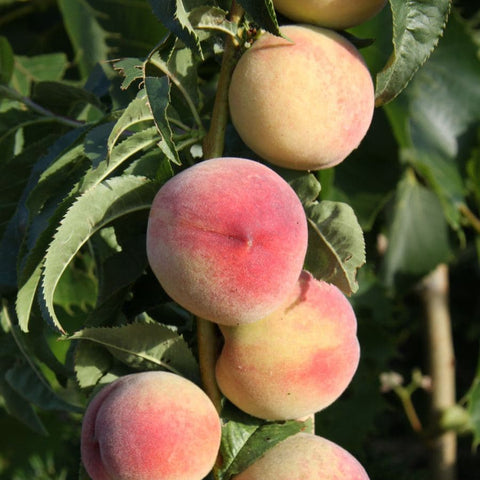As the United Kingdom shakes off the chill of winter, a period of remarkable transformation begins. Spring signals not just a change in the weather, but a crucial time for trees and plants to awaken from their dormant states. In this blog, we'll explore the impact of spring on plant and tree growth across UK gardens, including indoor varieties, and how the shift to British Summer Time (BST) can influence the botanical world. Additionally, we'll share some essential care tips to ensure your green friends not only survive but thrive during this vibrant season.
The Spring Bloom

With spring's arrival, longer daylight hours and warmer temperatures invite a chorus of growth and renewal. The soil softens and becomes workable as frost retreats, which is nature’s way of setting the stage for a burst of life, perfect for the growth of Spring trees. Buds begin to swell, eager to unfold into leaves and flowers. The increased photoperiod, or length of day, acts as a signal for trees and plants to break their winter dormancy and start the new growth cycle.
Gardeners typically see a lot of growth in their perennials, shrubs, and trees. Daffodils pierce the soil with their sunny-yellow hues, cherry blossoms prepare for their flowers, and indoor plants perceive the change, reaching toward the windows with renewed vigour. This season is critical as the burgeoning blossoms set the stage for the months to come, laying down the foundation for fruit and leaf production, essential for a plant's sustenance and reproduction.
The Clocks Go Forward
The switch to BST is perhaps more acutely felt by the sleep patterns of humans than by plants, yet it indirectly affects the botanical realm. Although plants do not "tell time" in the human sense, they are exquisitely sensitive to the length of daylight, which governs their circadian rhythms and triggers growth responses.
When we move our clocks forward, we extend our evenings with additional daylight. This doesn't directly modify plant behavior; however, the transition into spring, which coincides with BST, brings about longer, sunnier days. This natural extension of daylight is what primarily influences the growth of trees and plants.
They soak in the solar radiance, using it for photosynthesis – the complex process by which they manufacture food from light, water, and carbon dioxide. The more daylight available, the greater the plants' ability to produce the sugars and starches necessary for growth and development. More sunshine means more energy for plants to unfurl leaves, flower, and eventually bear fruit.
Our Care Tips for Spring
To ensure your botanical companions make the most of this season, a little extra care is needed. Here are some tips to help your plants flourish:
Water Wisely: With increased sunlight and temperatures, your plants will have a heightened need for water. However, be careful not to over-water; check the topsoil before watering to ensure it has partially dried out.
Replant and Fertilise: This is a perfect time to re-pot overgrown plants into larger homes and to introduce compost or general-purpose fertiliser to support vigorous growth.
Prune and Clean: Remove dead or diseased branches from trees and shrubs to stimulate new growth. Likewise, tidy up dead leaves and faded flowers from your indoor plants.
Mulch and Weed: Mulching helps to retain soil moisture and suppress weeds. Make sure to clear any weeds that can compete with your plants for nutrients.
Monitor Light Exposure: Gradually acclimate indoor plants to the brighter light to avoid scorching. For outdoor plants, ensure that they are receiving the appropriate amount of sunlight for their species.
Spring's arrival is a remarkable event that stirs the natural world to action. Trees and plants respond to the increasing warmth and light by launching into a season of growth, while the advent of BST serves as a reminder for gardeners to prepare for the longer days ahead. With proper care, attention, and an understanding of your plants' needs, this period can be one of the most rewarding times for any gardener.


